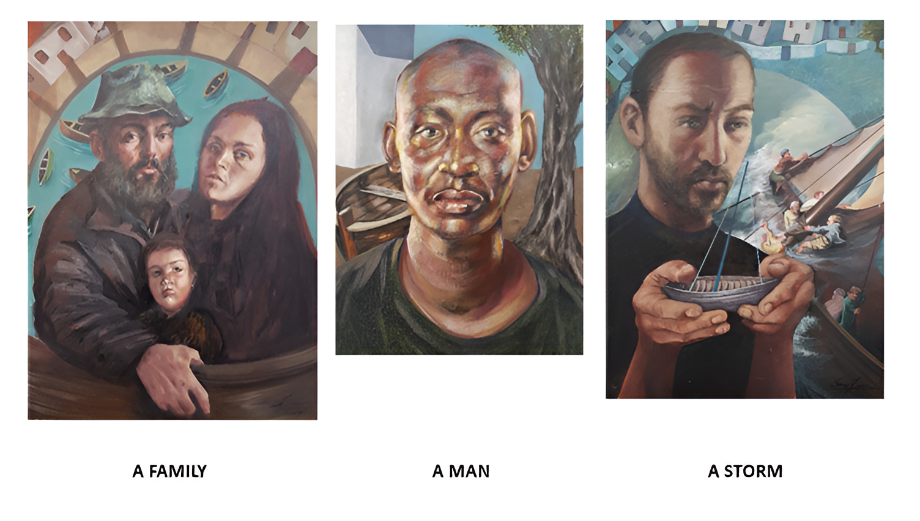
These three small paintings on board and canvas came along at a time when there was a steady stream of news in European media about refugees ‘flooding into Europe. The little boat that kicked off my graphic works, appears again in painted form, in the background of ‘A family’ behind ‘A Man’ and in the hands of the main figure in ‘A Storm’ as well as in the background where I have borrowed from ‘The Storm on the Sea of Galilee’. This is the only seascape ever painted by Rembrandt. It depicts Jesus calming the waves of the sea, saving the lives of the fourteen men aboard the vessel. Of these fourteen men, it is said Rembrandt included a self-portrait of himself in the boat, next to Jesus and his twelve disciples.
They show aspects of migration in different ways. Firstly, from the point of view of an ordinary family. I recall reflecting what it would be like to have to take the ones you love on such a journey. Your wife and your child. The endless travel, the risks, the loss. I was also thinking of the painting ‘The Last of England’ an 1855 oil-on-panel painting by Ford Madox Brown depicting two emigrants leaving England to start a new life in Australia with their baby. I was attempting to depict a similar feeling of leaving for ever and never really going back. Perhaps only in your thoughts.
In ‘A Man’ I painted a man on route to Europe, briefly disembarking on the island of Chios, in Greece. He is escaping persecution and conflict. He is shown against a typical Mediterranean backdrop of a boat and the olive tree. One depicting his arduous and incomplete journey in a vessel unfit for purpose, the other symbolising a brief and illusory sense of peace.
The third, ‘A Storm’ is about the many kinds of turmoil that one fleeing conflict, encounters. The physical danger as well as the trauma of indefinite and hazardous travel. In the little boat, the figure reflects on the futility of this enterprise, the hope, and the danger. His thoughts are occupying that liminal space between dreaming and reality.